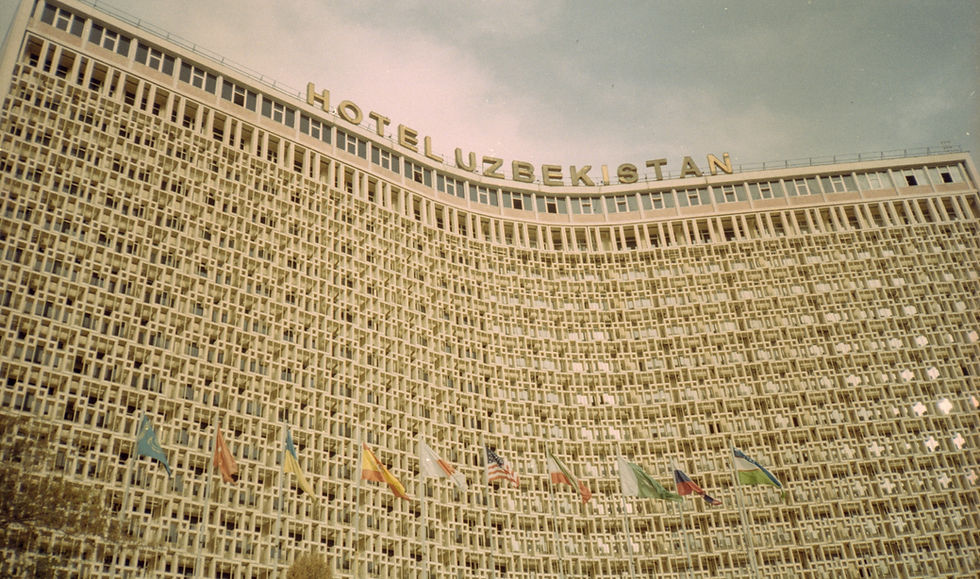Hagalund: Swedish Urban Development Through the Lens of the Miljonprogrammet
- Caravan Media Travels

- Oct 18, 2024
- 3 min read
Updated: Jul 5
We’ve noticed a lot of talk around EDTs on social media in recent months. EDTs, or extreme day trips, refers to taking an early morning flight out of your local airport, spending the entire day in a new city in a new country, and getting on the last flight home - the same day. All of this should cost you very little (no need for any accommodation bookings!).
Clearly exhausting, but a bucket load of fun, it is definitely worth checking some of these EDT groups on Facebook to help spark some budget-friendly travel ideas. Simply search for “EDT [your nearest airport]. Good luck!
Whether on an EDT, a slightly longer jaunt, or a full blown adventure, make sure you get out of the city centre. Even just for an hour or two, it's always worth picking a random area just outside the city to explore. Jump on a train, bus, hired bike or get ready to get some serious steps in.

Outside the centre, spaces breathe real life; with unique architecture people actually live in, parks where the locals hang out, random geezers not expecting to see a lost tourist, a slower pace, and perhaps something you were not expecting. You’re never quite sure what you will find. This weekend trip non-negotiable brought us to the charming residential area of Hagalund, just a fun 5km e-bike trip out of Stockholm's city centre.

Hagalund, apparently not named after the now-discontinued “basic” Ikea sofa bed model, is known primarily for its light blue highrise buildings, or Blåkulla, which tower above the numerous parks, green open spaces and small paths that wind between the massive housing blocks. As well as these features, it boasts being a fantastic excuse to bust out that last roll of Portra 800.

In the early 1800s, the district was born out of a dire lack of housing in Stockholm. Locals would construct their homes out of wood and other similarly cheap materials not permitted in the city centre, creating a colourful and diverse mix of buildings that formed the town around the train station and church. However, Hagalund was not immune to the rapid urban development boom that hit the world in the post-war era.

Sweden’s ruling Social Democratic party of the time could not ignore the political imperative to take major steps to tackle the post-war housing shortage which arose as a result of increasing prosperity, rapid urbanisation and greater demand for a good standard of housing. As a result, the government launched the Million Programme, or Miljonprogrammet. In what was possibly the most ambitious housing construction programme of all time, the government set out to construct one million new homes between 1964 and 1975.

Miraculously, the project was a success, representing a feat of social policy and urban planning which seems like a total impossibility in the political furnace that is today’s modern Europe. Even more surprisingly, before the task was even half-finished, Sweden’s housing shortage was no more, and was replaced by a housing surplus, primarily as a result of the turning economic tide.

Like all mass urban housing projects, the Miljonprogrammet had its critics. Complaints of “ugly” architecture, poor workmanship in areas, and dull, uniformness at the heart of planners’ visions were growing. Hagalund is one such place where these debates continue to take place, where only a select few of the original structures now remain.
The area stands as a reminder of a different space and time, with different problems, solutions and perhaps of a time when political imperatives had to be acted upon by those in power. The issues and debates around the development of places like Hagalund exist today.

Housing quality, access and affordability is possibly the most significant issue in most major European cities. Whilst many Scandinavian cities are facing similar chronic issues in 2024, it's possible that some measures taken by Nordic governments to tackle these issues will help to pave the way to a more effective system. Incorporating a larger share of public housing into cities, fostering cooperative housing associations to help get first-time buyers onto the property ladder, integrating vulnerable and homeless people back into society and work through housing initiatives, and more sustainable “future-proof” designs and ambitions all are features of housing policy across some parts of region.
With the planned construction of 4,000 new homes in the Hagalund industrial area, alongside an extension of the city’s green metro line and opening of the new Södra Hagalund station in 2028, the next chapter is already in progress…





Comments